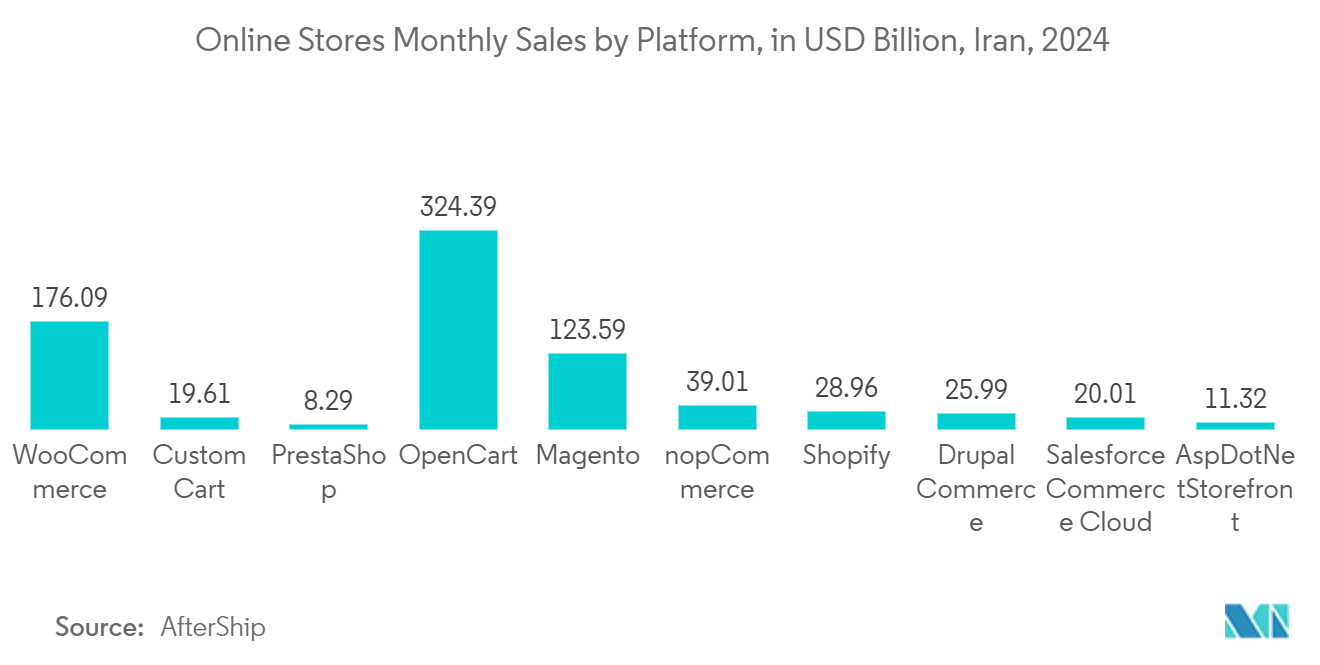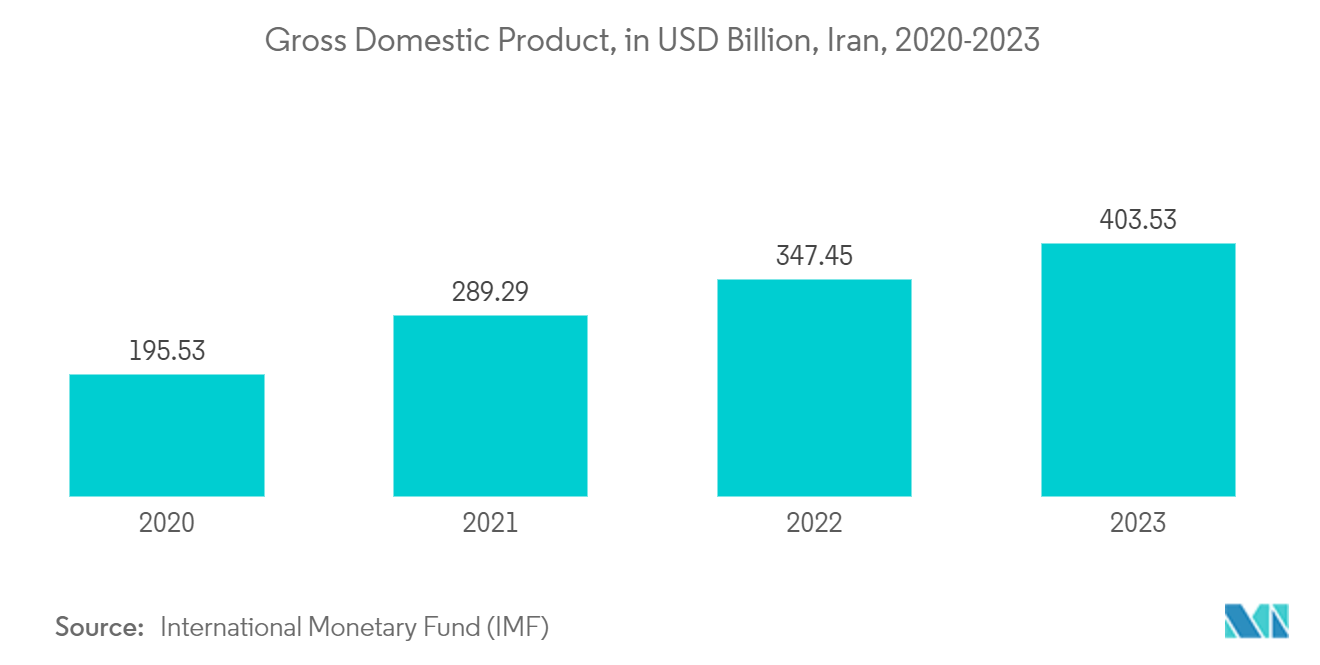Market Trends of Iran ICT Industry
Retail and E-commerce to Hold Significant Growth
- In Iran, in 2023, the internet penetration rate reached 127.2%, which increased by 13% compared to the previous year. There has been an increase in the use of information technology in B2C markets worldwide, including in the Islamic Republic of Iran. This is, in part, due to the limitations and complexities of the COVID-19 pandemic.
- In the past, Iran’s Ministry of Industry and Mining took responsibility for regulating and organizing online shops and started issuing e-Namad licenses for e-commerce websites. According to the electronic card payment system of Iran (Shaparak), in 2023, electronic purchases over the point of sales, internet, and mobile phones in Iran crossed around USD 47 billion. According to the Statistical Center of Iran, this amount was around 41% of the country’s liquidity. Therefore, in 2023, the number of online purchases in Iran increased by more than 2.5 times compared to the previous year.
- As per AfterShip, WooCommerce shows a significant lead, with total sales accounting for USD 176.09 billion, which constitutes 86.08% of the region's total sales on platforms. Custom Cart reports sales of USD 19.61 billion, accounting for 9.59% of the total platform sales in Iran.
- In March 2024, Iranian President Ebrahim Raisi held a meeting focusing on big steps in the field of artificial intelligence. Iran has already invested in cyber capabilities, and the use of AI is one of the technologies many countries are now investing in. Retailers can integrate generative AI to drive down costs in three main areas: customer experience, supply chain, and back-end e-commerce.
- Iran's pent-up demand for imported goods, especially among young Iranians, has created a strong foundation to support rapid growth in the retail market. The country has a favorable demographic structure, with 60% of its population aged below 30 years. Overall, such trends are expected to increase the market’s demand during the forecast period.

Manufacturing to Hold Significant Share
- In Iran, manufacturing holds around 19.99% of the GDP. Iran's factories continue to produce trucks, cars, appliances, electronics, and a wide range of fast-moving consumer goods. Multiple parties in Iran, in the public and private sectors, have invested in capital, research, and development to construct and maintain the infrastructure that supports the digital ecosystem that makes the digital economy possible.
- Iran does have existing capabilities in areas like automotive, aviation, defense, nanotechnology, biotechnology, and space technology. The Global Innovation Index 2023 captured the innovation ecosystem performance of 132 economies. Iran was ranked 62nd in the GII 2023 index. Regarding the top three innovation economies by region, Iran was ranked second in Central and Southern Asia.
- Iran has solidified several key trade agreements and collaborations to boost its economic standing. In May 2024, Iran and Pakistan signed eight agreements, including the creation of the Rimdan-Gabd Joint Free/Special Zone to enhance bilateral trade. Additionally, Iran and Algeria inked six agreements covering sectors like oil and gas and scientific and technological cooperation.
- Iran has also established technology parks and special economic zones with incentives to draw multinational manufacturers. For example, the Iran Science and Technology Park in Tehran focuses on biotech, nanotech, and renewable energy. Such zones provide infrastructure for collaboration between local firms and international partners on R&D.
- Iran is also strengthening ties with India, focusing on energy trade, and continuing its strategic 25-year partnership with China under the Belt and Road Initiative. Furthermore, Iran's engagement with the Eurasian Economic Union (EAEU) aims to transition from a temporary trade agreement to a full free trade agreement, enhancing trade with Russia, Armenia, and Kazakhstan.
- Overall, with increasing trade and partnerships, the manufacturing sector is expected to increase, which is expected to lead the demand for ICT.


